Delam – Five day teaching – August 2012 Malaysia Lessons 1-25
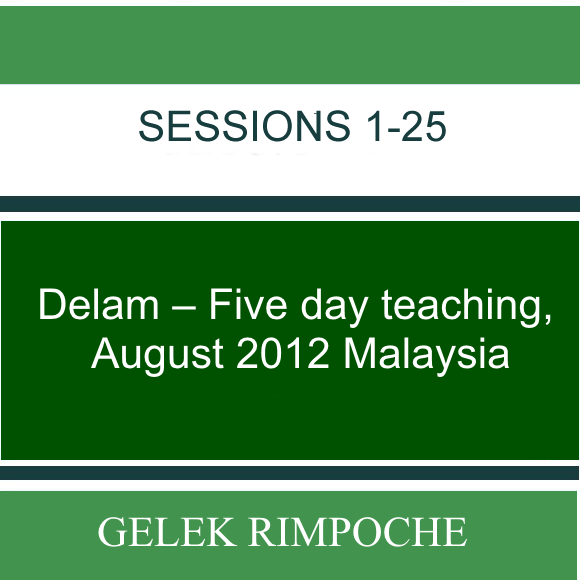
The first 25 lessons in the Delam – Five day teaching, August 2012 Malaysia Lessons series
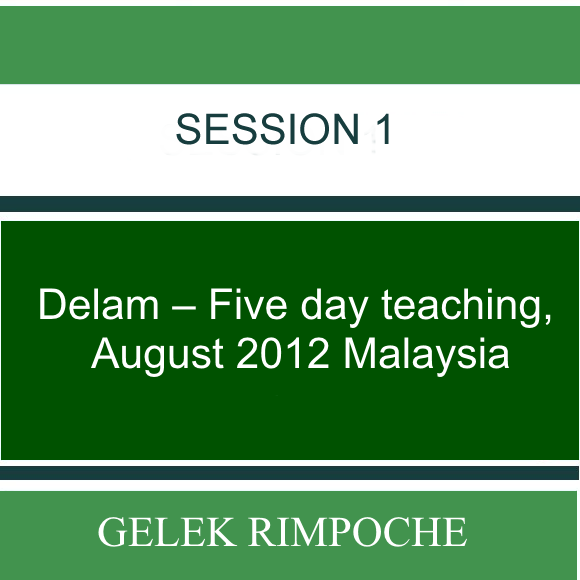
Delam – Five day teaching – August 2012 Malaysia Lesson 1
Lesson Number 1 of 50
The goal of this teaching is achieving buddhahood—perfect knowledge, behavior, and everything—for all living beings. (There is a background humming noise only in parts 01A to 01E; later teachings do not have this issue.)
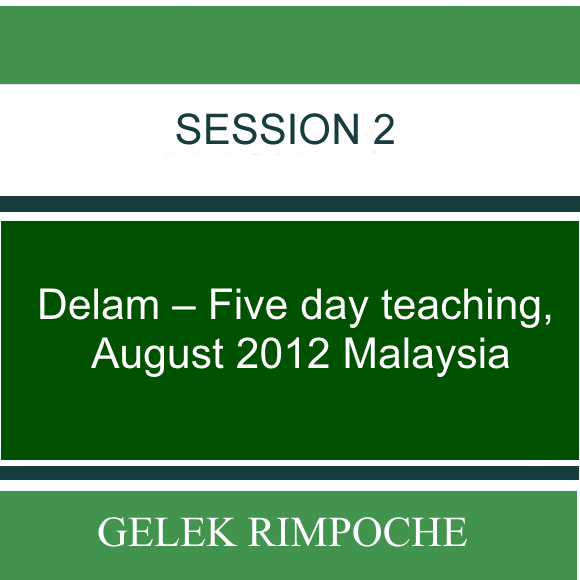
Delam – Five day teaching – August 2012 Malaysia Lesson 2
Lesson Number 2 of 50
We are all struggling, despite being more sophisticated than people in Buddha’s day 2600 years ago. But delam, the meditative “smooth path,” can be suitably applied to today’s problems, changing our attitude toward dealing with our difficulties. Many of these difficulties are self-made to boost our own egos.
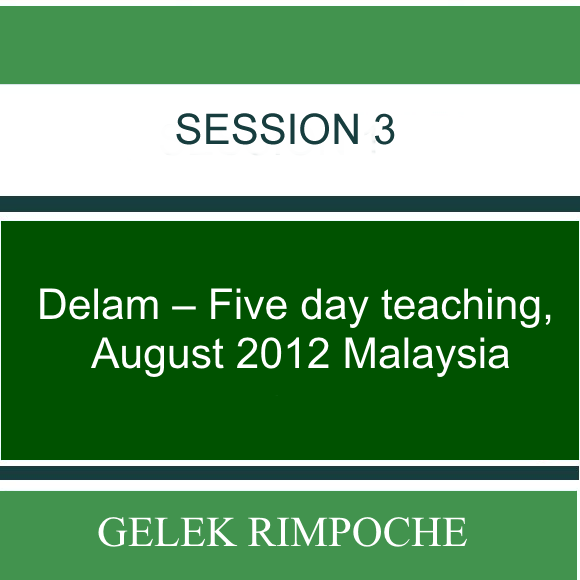
Delam – Five day teaching – August 2012 Malaysia Lesson 3
Lesson Number 3 of 50
Rimpoche urges the right mindset so that the lamrim can help us understand and correct our faults: a mind that is positive, receptive, and retentive. In other words, “Don’t take it personally on the one hand, but on the other hand, take it personally.” Before setting out to practice, find the right place and set your body in the right posture.
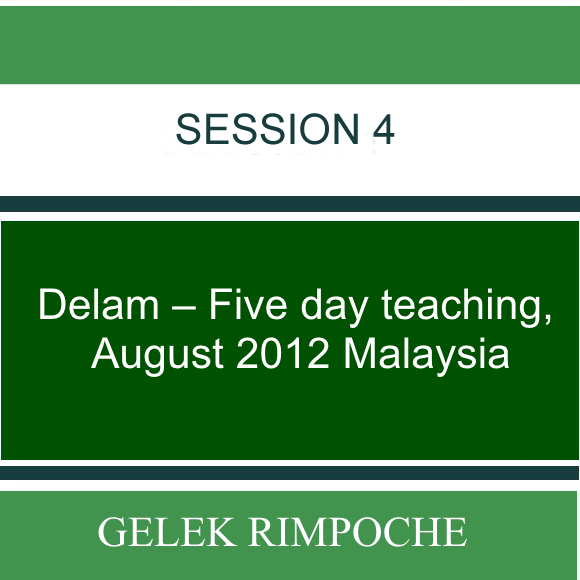
Delam – Five day teaching – August 2012 Malaysia Lesson 4
Lesson Number 4 of 50
Controlling your mind requires gentle discipline. Rimpoche discusses positive, neutral, and negative thoughts during meditation.
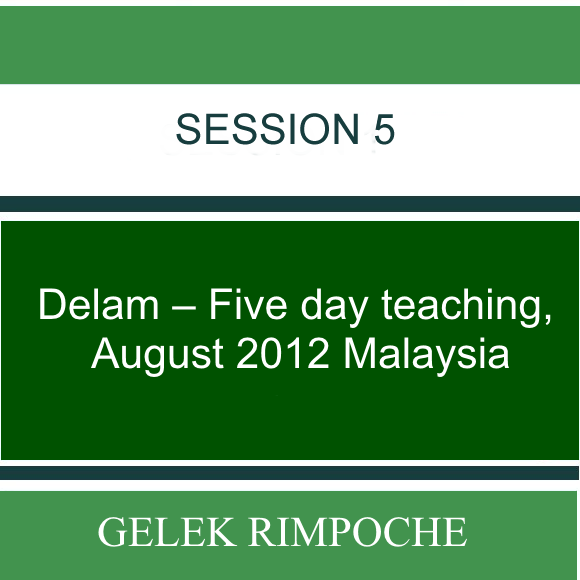
Delam – Five day teaching – August 2012 Malaysia Lesson 5
Lesson Number 5 of 50
Rimpoche describes how to compose your mind and body before starting practice. Every morning starts with appreciating the objects of refuge, appreciating the preciousness of our human life, and generating bodhimind.
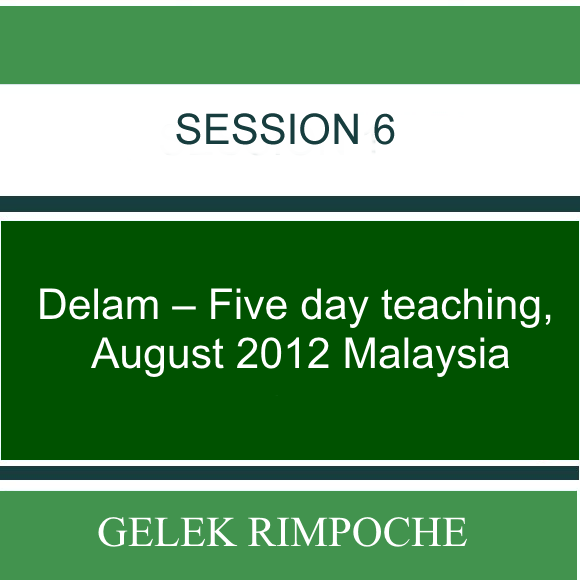
Delam – Five day teaching – August 2012 Malaysia Lesson 6
Lesson Number 6 of 50
The object of refuge is Buddha. Rimpoche describes the appearance and symbolism of Buddha, his throne and cushions, his posture, and his begging bowl full of nectars.
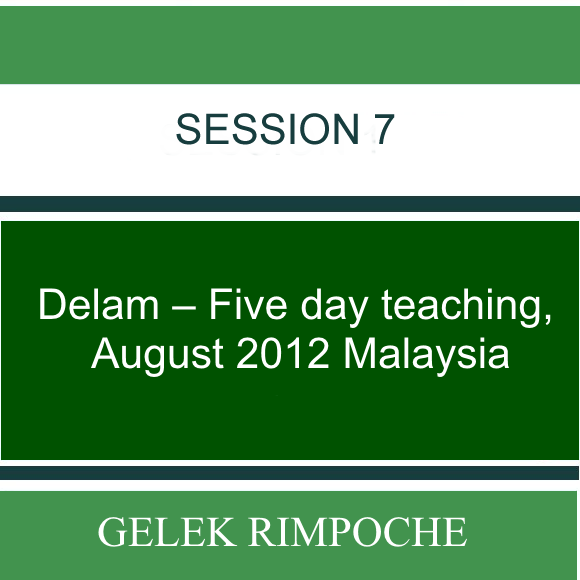
Delam – Five day teaching – August 2012 Malaysia Lesson 7
Lesson Number 7 of 50
Rimpoche describes the visualized appearance of the three jewels—buddha, dharma, and sangha—as well as their true meanings. He discusses the difference between intelligent faith and blind faith.
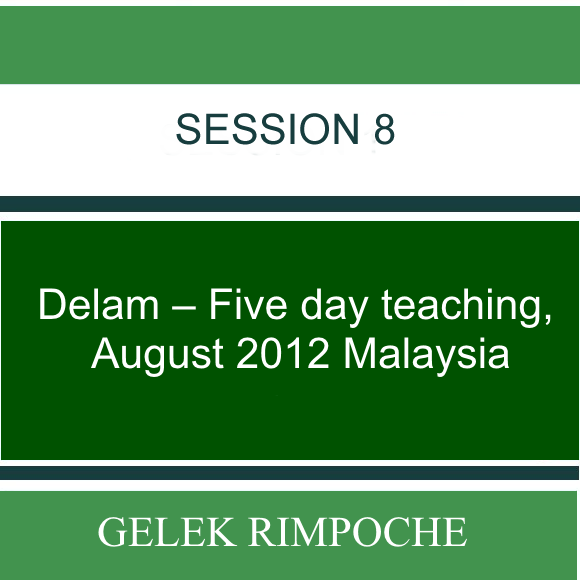
Delam – Five day teaching – August 2012 Malaysia Lesson 8
Lesson Number 8 of 50
Begin to engage in the practice of lamrim and lama-guru-yoga, based on the desire to end suffering and the preciousness of human life. Use intelligent faith to ask questions, find answers to your satisfaction, and avoid doubts later.
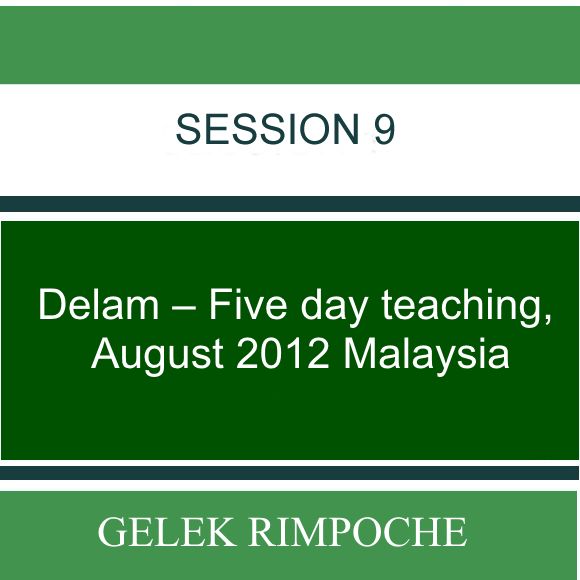
Delam – Five day teaching – August 2012 Malaysia Lesson 9
Lesson Number 9 of 50
Words and thoughts must be connected for the four immeasurables: wishing all beings free of suffering. Rimpoche also reviews all the prerequisites covered in the previous sections so far: the seven limb prayer, proper motivation, the field of merit, taking refuge, and generating bodhimind.
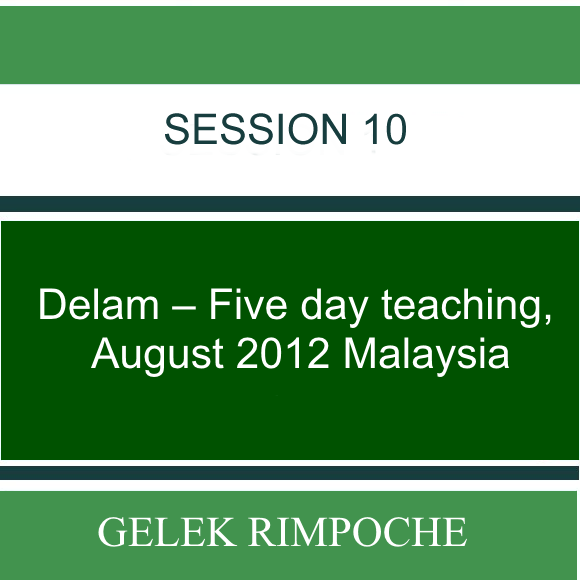
Delam – Five day teaching – August 2012 Malaysia Lesson 10
Lesson Number 10 of 50
Rimpoche reviews the previous day’s teaching, beginning with the prerequisites of guru devotional practice. The proper appearance of the Buddha varies, depending on the practitioner’s culture and background. Rimpoche emphasizes the power and full reality of the refuge field of merit.
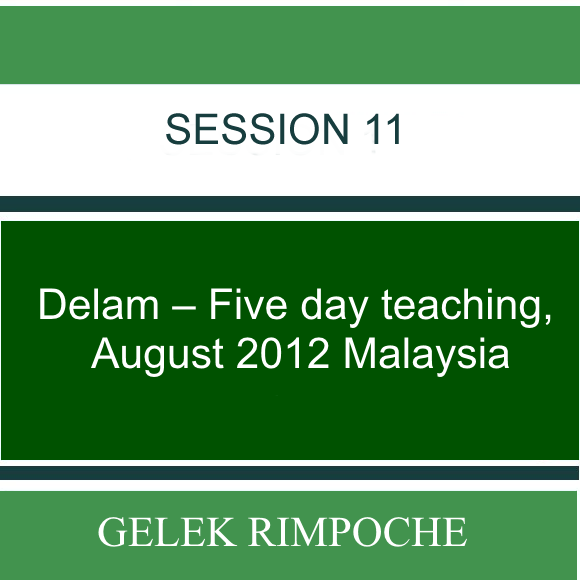
Delam – Five day teaching – August 2012 Malaysia Lesson 11
Lesson Number 11 of 50
Even in the modern day, in the best conditions, the refuge field of merit becomes real and engages / interacts with / guides you. The threat of my own lower rebirth motivates refuge, and the threat of my friends’ lower rebirth motivates the four immeasurables and total enlightenment (bodhimind).
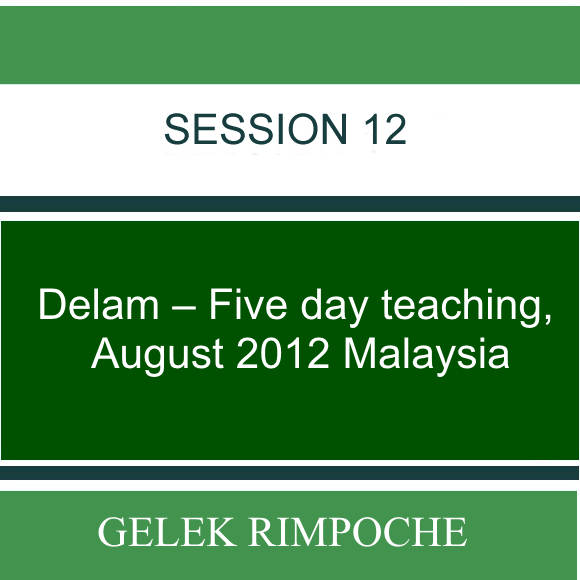
Delam – Five day teaching – August 2012 Malaysia Lesson 12
Lesson Number 12 of 50
The lamrim field of merit. This group includes the wisdom lineage, compassion lineage, root master, and all the direct teachers. Each being is marked by five colorful symbols. Each one of them is a complete object of refuge: every one is everything.
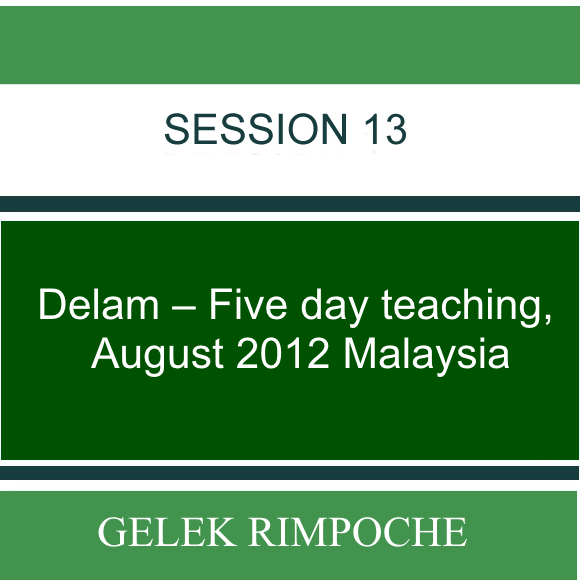
Delam – Five day teaching – August 2012 Malaysia Lesson 13
Lesson Number 13 of 50
Rimpoche reviews the end of the full lineage prayer (Tsongkapa through himself), the seven limb prayer, mandala offerings, and supplications to the objects of refuge.
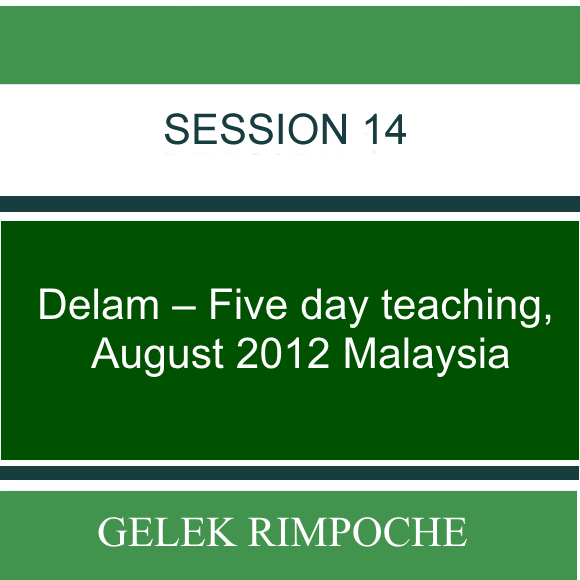
Delam – Five day teaching – August 2012 Malaysia Lesson 14
Lesson Number 14 of 50
Rimpoche focuses on having a relationship with enlightened beings that really “clicks:” by developing a strong connection to guru devotional practice, by (1) developing profound faith and (2) remembering kindness.
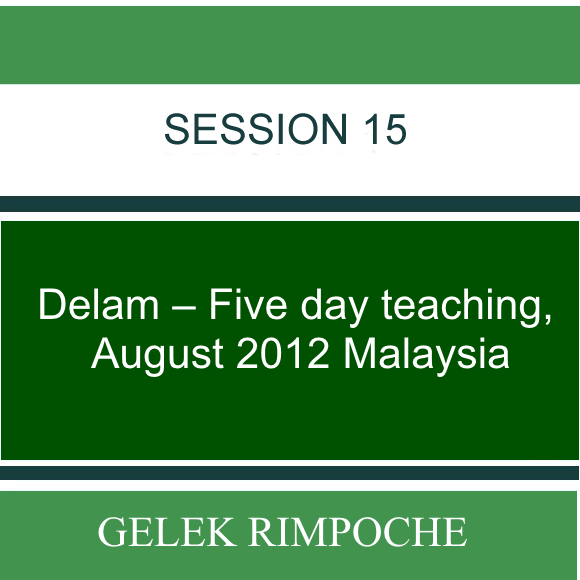
Delam – Five day teaching – August 2012 Malaysia Lesson 15
Lesson Number 15 of 50
Development is rooted in guru devotional practice, and guru devotional practice starts with incredible faith and profound respect toward your spiritual masters. See past your masters’ faults to recognize your masters as the true living appearances of Buddha.
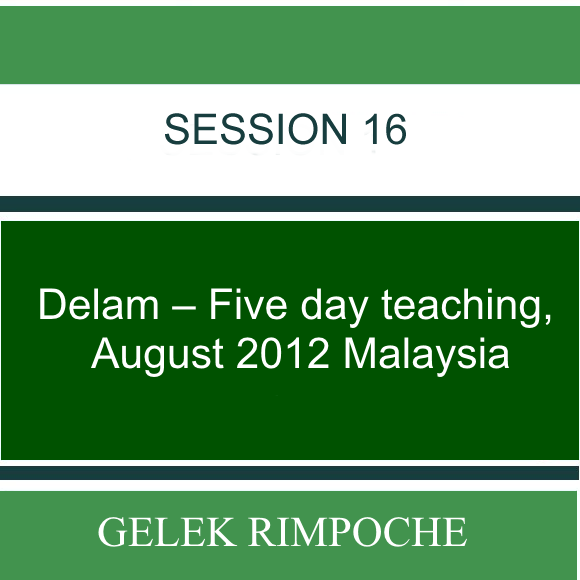
Delam – Five day teaching – August 2012 Malaysia Lesson 16
Lesson Number 16 of 50
Rimpoche recounts the difficulties faced by Asanga and others, whose own obstacles prevented themselves from truly seeing their spiritual masters as human beings, let alone enlightened beings.
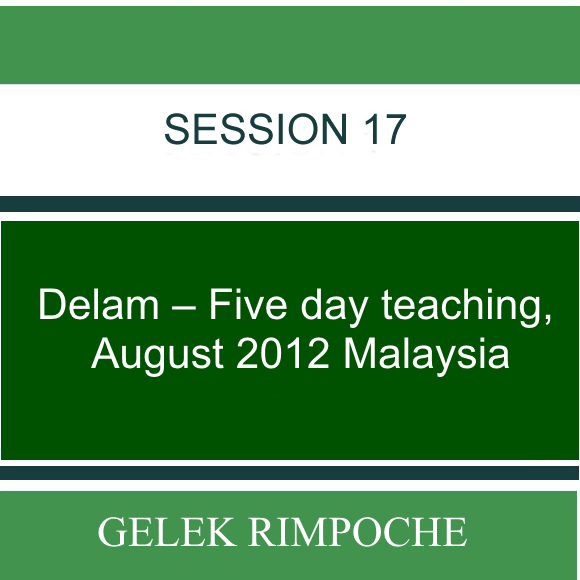
Delam – Five day teaching – August 2012 Malaysia Lesson 17
Lesson Number 17 of 50
The issue of perception of wrong activities of spiritual masters is so tricky, that Rimpoche avoided teaching guru devotional practice for his first 20 years in the west. Faults seen in our masters can create obstacles to our development, if they prevent us from seeing our masters’ every quality.
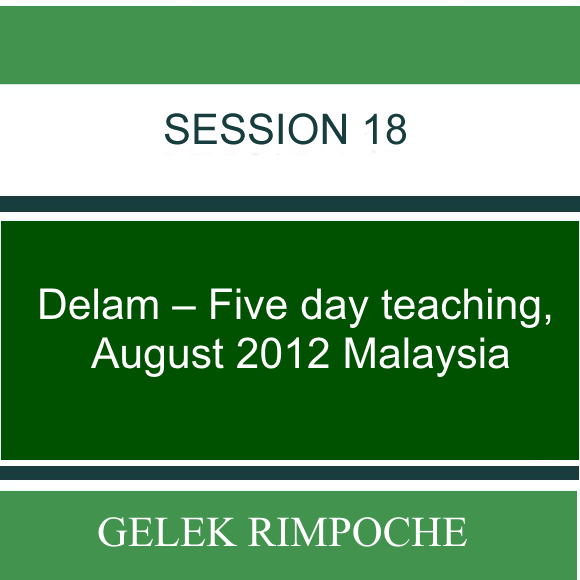
Delam – Five day teaching – August 2012 Malaysia Lesson 18
Lesson Number 18 of 50
(2) We must appreciate the tremendous kindness of our masters and Buddha’s unbroken lineage, who show us how to be free of suffering.
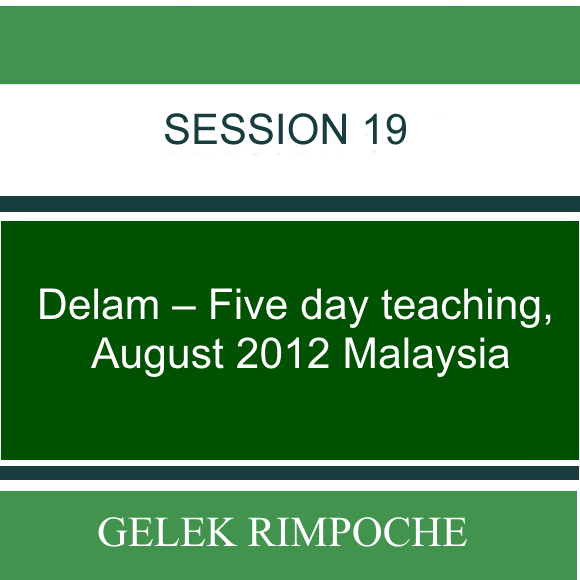
Delam – Five day teaching – August 2012 Malaysia Lesson 19
Lesson Number 19 of 50
Guru devotional practice requires action, mainly: following our masters’ instructions through spiritual practice. This includes avoiding too much entertainment, sleeping properly, waking properly. Rimpoche tells of his first Vajrayogini initiation, in which he learned through eerie miracles that following his master’s instructions is most important.
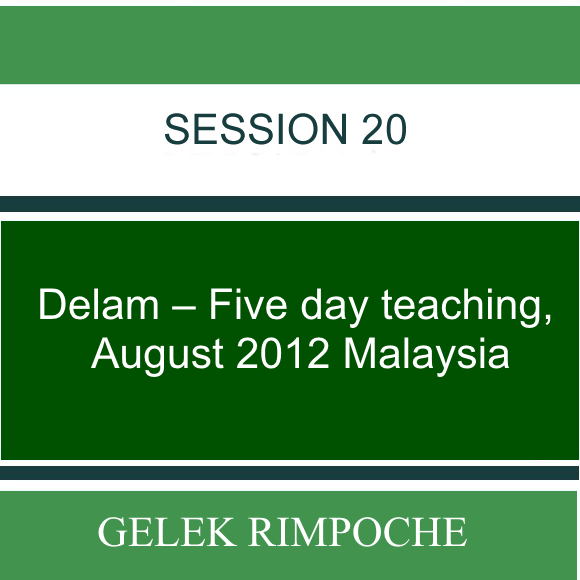
Delam – Five day teaching – August 2012 Malaysia Lesson 20
Lesson Number 20 of 50
The power of mantras depends on one’s belief. Rimpoche explains the mantra “Om Muni Muni Maha Munai Ye Soha,” which means “Victory, victory, greater victory.”
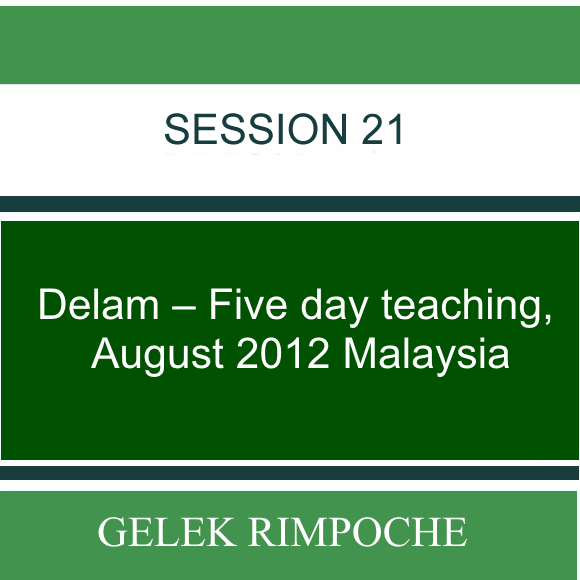
Delam – Five day teaching – August 2012 Malaysia Lesson 21
Lesson Number 21 of 50
After guru devotional practice comes the awareness of the preciousness, importance, and rarity of human life. To motivate this awareness, consider that “I and all sentient beings have struggled so much, even in this one lifetime.”
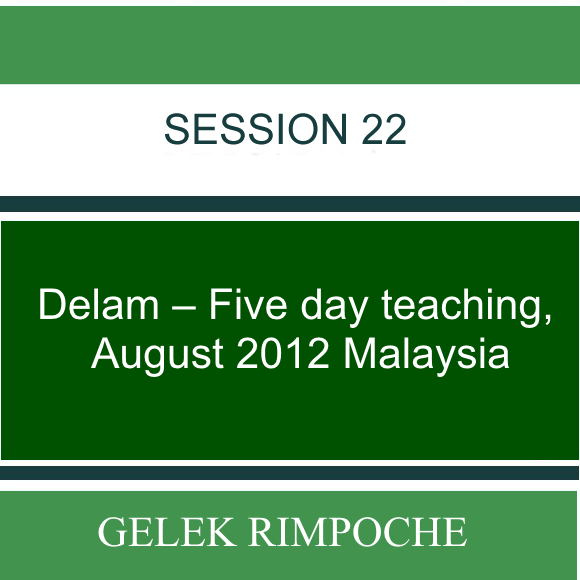
Delam – Five day teaching – August 2012 Malaysia Lesson 22
Lesson Number 22 of 50
The Tibetan word “teh jor” describes this preciousness as “leisure and richness.” Our richness is our oppotunity to accumulate merit, by practicing generosity and morality.
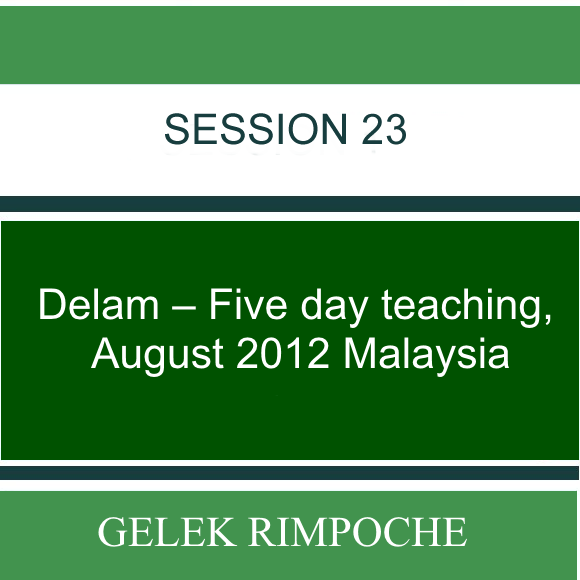
Delam – Five day teaching – August 2012 Malaysia Lesson 23
Lesson Number 23 of 50
We can achieve enlightenment with the minds we have. According to Buddha, time is precious because we have total control of our own lives and destinies.
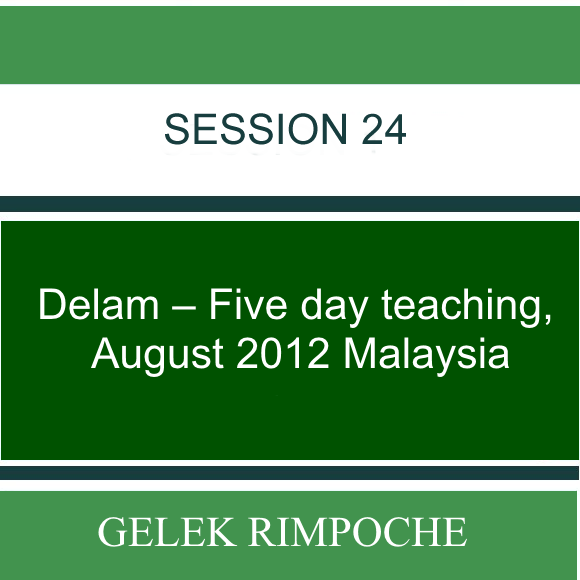
Delam – Five day teaching – August 2012 Malaysia Lesson 24
Lesson Number 24 of 50
The “actual” practice starts with generating the lama field of merit. Rimpoche discusses why we turn to spiritual practice, rather than activities leading to material gain (including education), in order to find the ultimate satisfaction.
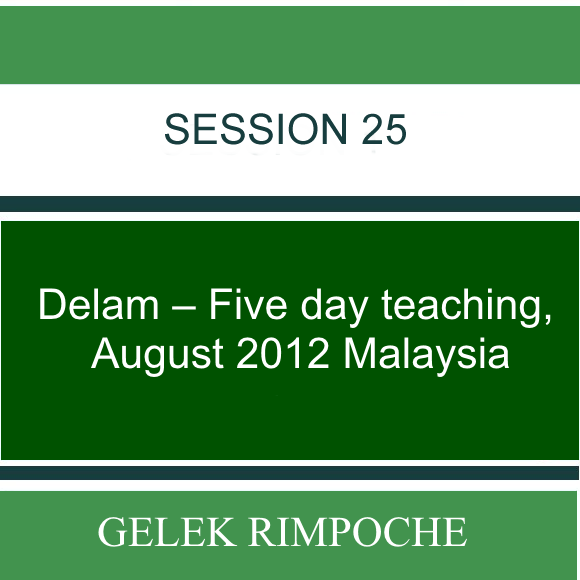
Delam – Five day teaching – August 2012 Malaysia Lesson 25
Lesson Number 25 of 50
Rimpoche discusses aging, struggle, the major and minor sufferings we all face, the bigger problems of rebirth in the hell realms, and their ultimate causes: our own previous actions. It is important to also contemplate karma and reincarnation, impermanence, and death, which often comes without warning.

